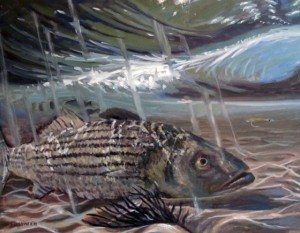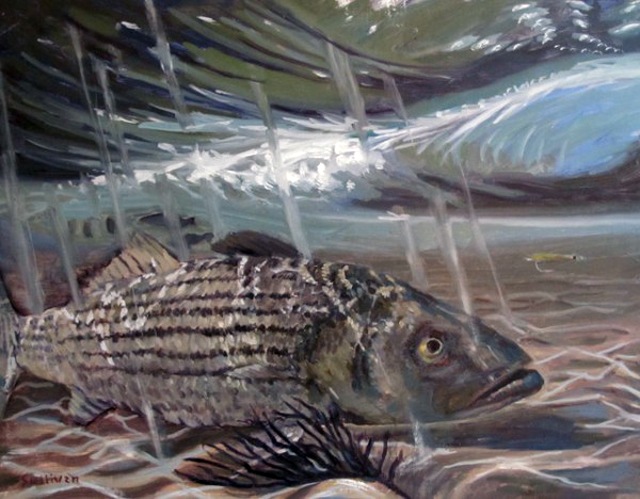With the debate in full force right now, the ASMFC, commercial and recreational captains, politicians, and recreational anglers are sounding off on the future of our beloved striped bass. Here is one very educated and passionate take on where we currently stand.
From the “One Angler’s Voyage” blog
After spending over 50 years on and around the water, I have realized that without strong fisheries laws and effective conservation measures, the future of salt water fishing, and America’s living marine resources, is dim. Yet conservation is given short shrift by national angling organizations and the angling press. I hope that this blog will incite, inform and inspire salt water fishermen to reclaim their traditional role as the leading advocates for the conservation of America’s fisheries.

Artwork by Bob Sullivan.
Thus, folks who care about the striper’s future have been rightly concerned by the fact that the index has been coming in below average for most of the years in the past decade, with the 2012 index the lowest in more than fifty years—even lower than anything recorded during the depths of the last stock collapse.






